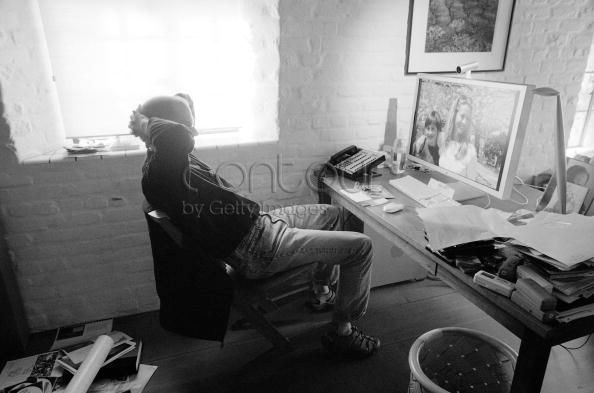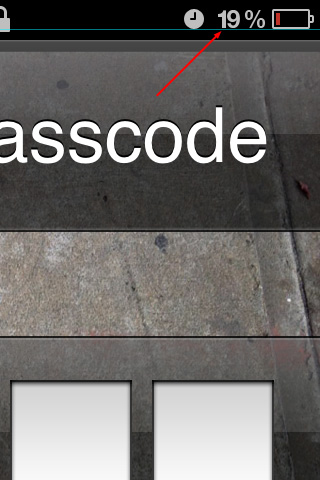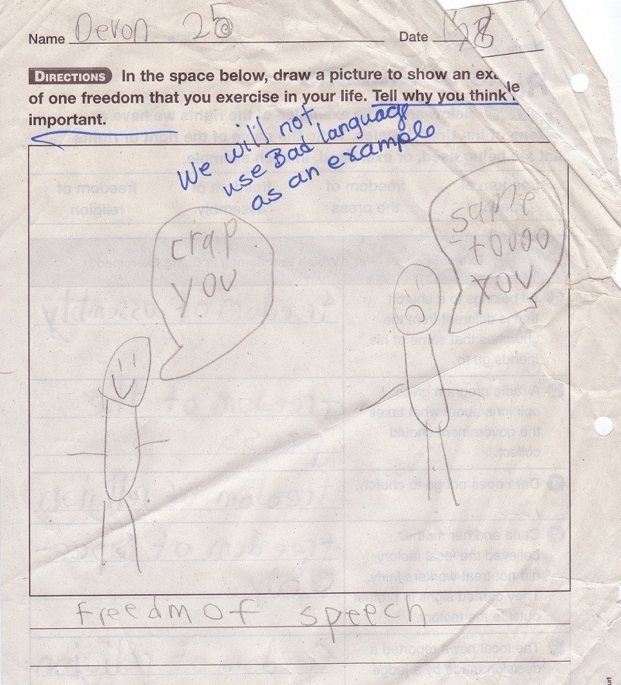all in your mind
Ars Technica: Self-affirming essay boosts coeds’ physics skills
For many years, there has been a persistent achievement gap between the performance of males and females in math and the sciences. It has become increasingly apparent, however, that the problem is cultural. The math gap seems to vanish in countries with higher degrees of gender equality, while females exposed to the stereotypical expectation that they’d do worse in a subject tended to live down to these low expectations. These findings, however, don’t provide clear guidance as to how to address the problem: if females have already been exposed to these stereotypes, how do you get them to ignore them and perform up to their abilities? The answer, it appears, may be as simple as a short essay.
He’s human.

Above is a shot of Steve Jobs at his desk at his home in 2004, from this series by Diane Walker (via Minimal Mac).
I know there’s people of there who imagine billionaires and superstars like Steve Jobs in grand castles of marble and gold who are constantly getting jettisoned between continents in private jets.
They don’t imagine a dude in room with white-painted brick walls at a simple wooden desk with a messy pile of paper and books on it.
Cold + Bold
A great presentation by Jonathan Harris on his work as an artist-programmer and his battle between life and code.
Here’s a piece of a journal entry he wrote shortly after his MoMA show, I Want You To Want Me :
I have to live to work. Thats what Hemingway used to say. His work was to write boldly. So he had to live boldly first to get good material. These days my work is also to write, but to write code, not words. To write good code, it’s often best not to live life and certainly not to live life boldly because living life boldly requires energy and empathy and to write good code you need to save those things for your program and not waste them on people. This kind of strategy makes your code bold, but your life cold.
It’s weird – the more time I spend with computers the more I feel they’re exerting some kind of hold over me. Like it’s me serving them and not the other way around. When I’m deep into my program like I am now I feel like a totally different person than I am on the road. In fact, I frequently don’t feel like a person at all but some organic operating proxy to type the necessary instructions. I lie on my bed in the afternoon and look at the wall and it’s hard to know exactly what I’m feeling because my mind is entirely inside the machine.
via Minimal Mac
Kickstarter: Disrupting With People
Kickstarter is blowing doors on monetization strategies this year and challenging traditional consumer and auction paradigms. News dropped today of Scott Wilson breaking Kickstarter’s funding record by raising over $275,000 for his iPod Nano watch enclosure. And he raised that money in one week. One.
I first learned of Kickstarter from a post by Craig Mod where he broke down how he was able to fund the printing and publishing of his book, Art Space: Tokyo. It’s a must-read for anyone in any type of media who wants to stay relevant.
Forget that. You need to understand the success of Kickstarter of you’re a human being who works in order to obtain money to live. Period.
The hook for me, what makes Kickstarter so powerful is the human element. Call it social networking, call it viral, call it crowdsoucing. I call it human.
The Economist did an interview with one of the founders, Perry Chen. The whole interview is great, but this bit stood out for me:
Just like eBay or Etsy, you are obligated to do what you say you’re going to do–fulfil the limited edition, or create the event or experience that you promised to create–in exchange for someone opening their wallet and backing your project. The interesting thing is that these projects are funded by dozens, hundreds and in some cases thousands of people, but it is never completely anonymous. Within those backers are friends, long-time fans, family members, classmates, people in the gardening club with you. So there’s already a social fabric that’s brought into Kickstarter. The accountability is strengthened because those people are there.
People.
Just keep people in mind when you’re starting a new business plan. If you keep the focus on people and not on “how we’re going to beat the competition”, you’re already putting yourself in a better position for success.
James Pedrazzini

James Pedrazzini (via siteInspire)
same toooo you
What drives Max Levchin
GigaOM: In His Own Words: Max Levchin
Levchin on what motivates him:
At any given moment what makes me tick is some combination of desperate desire to remain relevant, the make things that people care about, probably some very strong competitive streak, where if I see a friend or a competitor or someone I know making something awesome, I look myself in the mirror and I ask myself ‘why I am I not making that? Or why am I not making something even more awesome?’ … But a lot of times I just want to have fun, so I wake up and try to do fun things.
Hey co-created Paypal and sold it. His most recent company, Slide, was bought by Google for $200 million.
Some people wonder why guys like this keep working.
There’s your answer.
If this isn’t nice, I don’t know what is
In one of his stand-up specials in the 80’s, George Carlin explained his problem with people who say have a nice day. Now all the pressure was on him to try to go out and have a nice day. Having a crappy day was easy, he said. You just get up.
That’s the thing with cynicism – it’s easy. And while the name of this site is Daily Exhaust (exhaust as in venting, getting things off my chest), my goal is not to make this site a huge bitchfest. I have more to contribute than that. I like positive energy. The love you take is equal to the love you make. All that good stuff.
You can find things wrong at 10,000 feet looking at the earth or 10 feet away, looking at your personal life. But that’s easy. It’s harder to keep the chin up.
This bit from Kurt Vonnegut is a great example of the attitude I’m promoting (via Northcoast Zeitgeist):
And now I want to tell you about my late Uncle Alex. He was my father’s kid brother, a childless graduate of Harvard who was an honest life insurance salesman in Indianapolis. He was well-read and wise. And his principal complaint about other human beings was that they so seldom noticed it when they were happy. So when we were drinking lemonade under an apple tree in the summer, say, and talking lazily about this and that, almost buzzing like honeybees, Uncle Alex would suddenly interrupt the agreeable blather to exclaim, If this isn’t nice, I don’t know what is. So I do the same now, and so do my kids and grandkids. And I urge you to please notice when you are happy, and exclaim or murmur or think at some point, If this isn’t nice, I don’t know what is.
Have a nice day. Really.
My Friday Moment of Zen

via Motoriginal
Photoshopping isn’t always a bad thing.

Say what you will about doctored photos being bad and not representing people, places and things as they really are, but I wouldn’t mind a retoucher spending a little time on this Lipton ad.
That’s just foul.
via Found In Mom’s Basement
The Priority Is Content
Content & Advertising.
Those two are usually fighting in the media.
While there’s plenty of examples of corralling each into their own space and co-habitation, Advertising is usually the one doing the bullying. We talk of the need for advertising to move beyond dis/interruption, but I’m not sure that’s possible. At best we can attain a salad dressing-like mixture of oil and vinegar. It might taste good, but look closely and you’ll see they never fully unify.
And I’m fine with that, because there’s 3 tools that put Content back in the drivers seat – Instapaper, Readability and the Reader tool in Safari 4.
It’s interesting these tools exist. It implies readability is not a priority for news and media websites.
advanced tip – many news sites break articles into multiple pages, somewhat crippling the tools below. The solution is to view the Printable version of articles. This *usually shows the article on one, continuous page.
Quick breakdown:
Instapaper
This is an iPhone/iPad application. First set up an account and download the app to your iOS device, then you set up a bookmarket in the bookmarks bar of your computer’s browser. As you come across articles you want to read later, you click on the bookmarket, which places the article into you Instapaper queue. Now, when you launch the Instapaper app, all the articles you ‘Saved for Later’ will get downloaded to your device (provided you have an internet connection). The best part of the app is it downloads just the article and associated images. No banner ads, no navigation, just the content.
Readability
Readability also uses a bookmarket. It’s simple, when you’re on a page you want to read, click on the bookmarket and the page instantly gets stripped of all formatting, leaving you with a clean white page with a single column of easy-to-read text. It also gives you links to: Return to Article, Print and Email.
Safari Reader Tool
This tool works the same as Readability, except it’s baked into the Safari browser. The only catch to this tool is it only shows up in the address field when you’ve reached a page Safari deems eligible, such as individual article and blog post pages. It won’t, for instance, be available to use on the home page of the NYTimes.
Retina Display Font Oddity
I decided to turn on the Battery Percent display on my iPhone 4 a few weeks ago. It’s off by default.
After I did this I notice what seemed to be irregular spacing/alignment on the numbers. It happens with most of number pairs.
I thought it was misalignment, but on closer inspection, the numbers are technically aligned horizontally. What seems to be happening (or not happening) is that rounded numbers are not dipping below the baseline as they should.
Characters in a typeface, when designed correctly, need to rise above the cap height and dip below the baseline in order to appear balanced when sharing a line with flat characters.
This is the problem with having a super high resolution display (326 dpi) like the iPhone 4 has – mistakes and much more obvious.
Get on it, Apple.



a grab bag of neglect, good intentions and poor execution
I can tell when someone is inspired.
Matt Buchanan over at Gizmodo just wrote a scathing review on Samsung’s answer to Apple’s iPad – the Galaxy Tab. He’s sarcastic, and is obviously having fun reacting to the piss-poor quality of Samsung’s product.
Could he be lying? Making up a bad review? Sure, but my money says this is a really bad multi-touch tablet.
Here’s some juicy parts:
The Tab feels like a grab bag of neglect, good intentions and poor execution.
This thing is just a mess. It’s like a tablet drunkenly hooked up with a phone, and then took the fetus swimming in a Superfund cleanup site.
Typically, the point of a compromise is to bring together the best of both sides. The Tab is like a compromise’s evil twin, merging the worst of a tablet and the worst of a phone.
This Google/Samsung schädenfreude tastes almost as good as yesterday’s news that Microsoft might have only sold 40,000 Windows Phone 7’s.





